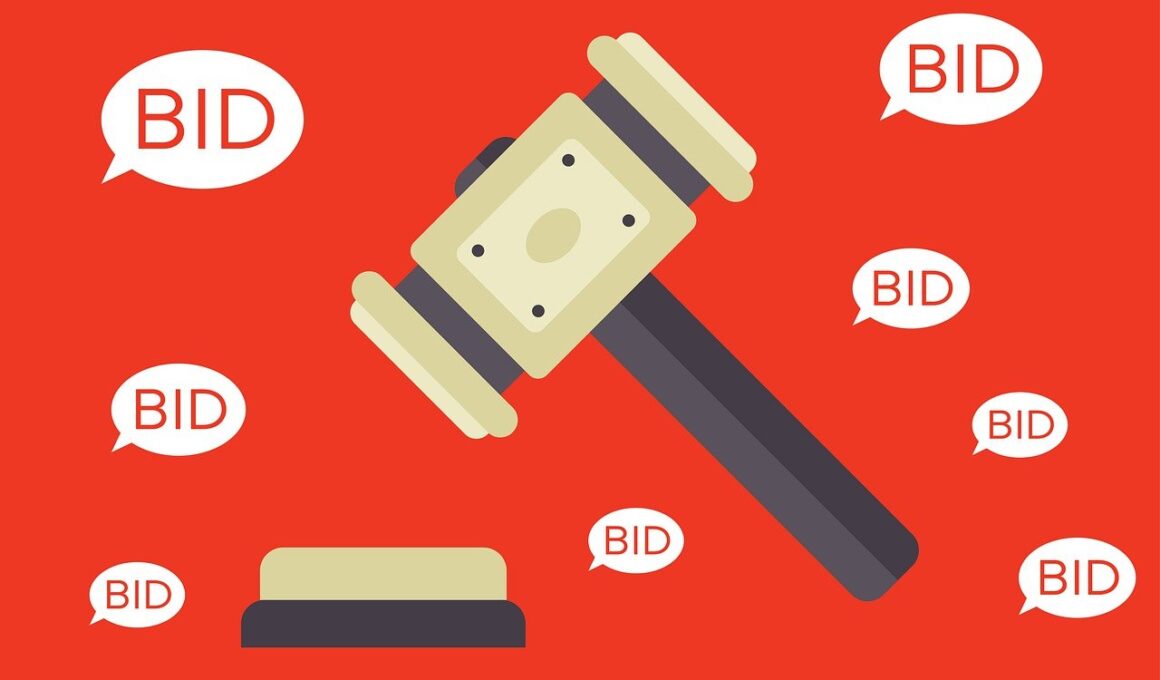Top Bidding Strategies for Pay-Per-Click Campaigns
Pay-Per-Click (PPC) campaigns can be highly competitive and complex, necessitating effective bidding strategies to optimize performance and budget. One significant strategy involves the CPC or Cost-Per-Click bidding, which allows advertisers to set the maximum amount they are willing to pay for a click. Understanding how much to bid requires analyzing historical performance, competitor bids, and keyword relevance. This knowledge will assist you in establishing a competitive CPC that aligns with your marketing goals. Another crucial strategy is enhanced CPC. This automatically adjusts your manual bids based on the likelihood of a conversion, maximizing the efficiency of your ad spend. By leveraging machine learning algorithms, this approach can lead to increased conversion rates while still keeping budget constraints in mind, ultimately enhancing the overall ROI. Implementing proven bidding strategies is essential for optimizing your PPC efforts and ensuring sustained growth. Aiming for continual monitoring and adjustments based on performance metrics will help maintain an edge over competitors. Therefore, engaging with these bidding strategies and optimizing them continually is vital for PPC success.
Understanding Manual vs. Automated Bidding
When embarking on your PPC journey, it’s essential to distinguish between manual and automated bidding strategies. Manual bidding involves setting your CPC bids personally for keywords, allowing for precise control over your budget and ad placements. This strategy is beneficial when managing a limited budget or when targeting specific keywords with proven performance metrics. In contrast, automated bidding employs algorithms to adjust bids based on real-time data, focusing on maximizing conversions while adhering to set parameters. Automated strategies can include options like maximize conversions and target CPA (Cost Per Acquisition). These options can save time and reduce the risk of human error, making them appealing for advertisers who manage larger accounts or diverse product lines. However, they require a well-structured account with enough data for the algorithms to function effectively. Therefore, understanding the pros and cons of each approach is essential for determining which strategy aligns best with your campaign goals and available resources. Regular performance reviews and adjustments will also help in making informed decisions regarding your bidding strategy.
Another effective bidding strategy is target return on ad spend (ROAS). This strategy focuses on maximizing revenue relative to advertising spend. By setting a target ROAS, advertisers can optimize bids to reach desired profitability while evaluating the effectiveness of each campaign. Implementing this strategy requires careful monitoring of metrics like conversion rates and average order value to ensure you are meeting your targets. Furthermore, employing the Ad Rank metric is essential, as it determines your ad position and influence on bidding strategies. Ad Rank is calculated based on your bid amount, ad quality, and expected impact of extensions and other ad formats. Focusing on enhancing Ad Rank helps in achieving better placement and lower CPCs. Additionally, active adjustment of bids based on device performance insights can lead to increased effectiveness. For instance, if mobile users convert better than desktop users, consider increasing bids for mobile to capitalize on this trend. Broadening your bidding tactics to include various strategies allows you to better navigate the competitive landscape of PPC campaigns.
Leveraging Audience Targeting
Integrating audience targeting into your bidding strategy is crucial for improving ad performance. By identifying your target audience and understanding their preferences, interests, and behaviors, you can adjust bids accordingly to improve engagement. Employ remarketing lists to tailor your ads toward users who have previously interacted with your website, optimizing the chances of conversions. Moreover, considering in-market audiences allows you to target users actively searching for your products or services. Bidding higher for these audiences can yield a more significant return on investment. Additionally, demographic targeting enables advertisers to refine their approach by age, gender, and household income, which can enhance the relevance of the ads displayed. Using tools provided by platforms like Google Ads allows for granular adjustments based on audience performance metrics, resulting in a more effective budget allocation. Testing and optimizing audience segments can also provide insights into which demographics yield the best results, guiding future strategies. Therefore, leveraging audience targeting not only enhances your bidding strategy but ultimately drives higher ROI.
Dynamic keyword insertion (DKI) is another powerful strategy to optimize ad relevance and bid effectiveness. By dynamically inserting search terms into your ad copy, DKI increases the likelihood of ad engagement among users. This personalized approach makes your ads more relevant, leading to higher click-through rates and lower CPCs. However, it is crucial to have carefully planned keywords and a clear strategy before implementing DKI, as poorly structured campaigns may lead to irrelevant ads and wasted spend. Moreover, employing geo-targeting in conjunction with your bidding strategies can enhance local engagement and conversions. By customizing your bids based on geographical data, you can optimize your budget for specific regions, thus increasing ad effectiveness. For instance, if your analytics indicate better performance in urban areas, allocate more budget to those regions, allowing for refined targeting and improved ROI. Always track, analyze, and adjust your campaigns based on the gathered data to ensure optimal performance. Experimenting with various bid modifiers can provide further insights into achieving desired outcomes.
Utilizing Bid Modifiers
Bid modifiers are an excellent addition to your PPC campaigns as they enable you to adjust bids based on various criteria. For example, adding modifiers based on time of day can allow you to increase bids during peak hours when potential customers are more likely to engage. Similarly, applying bid adjustments for devices lets you prioritize spending on the devices that yield higher conversions. Understanding analytics is necessary to assess which modifiers positively impact performance, enabling effective budget allocation and resource management. Furthermore, optimizing bids based on ad placements can enhance visibility on higher-performing networks, improving overall campaign performance. Ensure that you regularly review performance metrics and adjust modifiers based on shifts in results to maintain effective bidding strategies. Using tools like Google Analytics or PPC management software can help streamline this process, providing valuable insights into the most effective modifiers for your campaigns. In addition, continually testing and iterating on your bid modifiers can lead to improved results over time, resulting in a more strategic advertising approach. Remember, the goal of utilizing bid modifiers is to maximize the effectiveness of your bidding strategy for optimal results.
Finally, A/B testing can significantly enhance your bidding strategies by allowing you to evaluate different bidding approaches and keywords. A/B testing involves running multiple variants of your campaigns against each other to determine which ads perform better. This process can reveal valuable insights regarding what bidding strategies resonate with your audience. For instance, testing various bid amounts across the same keywords can help identify optimal price points that drive conversions. It is equally important to measure metrics such as click-through rates, conversion rates, and overall ROI to glean actionable insights from your A/B tests. Adopting a methodical approach to testing promotes continual improvement in your bidding strategies. As trends and customer behaviors evolve, ongoing testing ensures that your campaigns remain relevant and effective. Regularly reviewing and adjusting your strategies based on A/B test results will foster a culture of optimization that leads to sustained PPC success. Therefore, consider incorporating A/B testing in your paid search campaigns as a means of refining and enhancing your bidding strategies over time.
Conclusion: Evolving with Bidding Strategies
In summary, as digital advertising continues to evolve, so too must your bidding strategies in PPC campaigns. Staying informed about emerging trends and updating your strategies will empower you to navigate the complexities of the ad auction landscape effectively. By mastering various bidding techniques, employing audience targeting, and utilizing A/B testing, you can optimize your campaigns for maximum ROI. Remember to harness the power of data analytics in making informed decisions that guide your bidding actions. Continuous monitoring, evaluation, and adjustment of your strategies will ultimately translate into measurable success. As you implement these strategies, maintaining flexibility and adaptability in your approach is essential. By evolving your bidding strategies alongside shifts in market dynamics and user behaviors, you put yourself in a prime position to thrive in the highly competitive realm of PPC advertising. It’s not just about spending more; it’s about making every investment in your campaigns count. Harnessing the right bidding strategies will ensure sustained growth and profitability in your pay-per-click endeavors. You can transform your approach to PPC success by prioritizing data-driven adjustments and audience-centric strategies.


